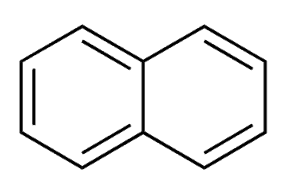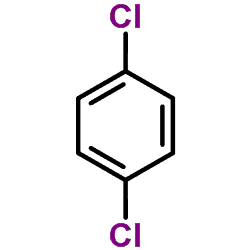Mothballs are Dangerous and Ineffective.
#whatbugsme
Mothballs work on… NOTHING!
Not only are mothballs hazardous, they are one of the most unnecessary chemicals manufactured. There isn’t anything that naphthalene accomplishes that we cannot do safer with something else. What began as a way to kill moths has blossomed into a widely-used means of repelling other pests. I get told all the time to use mothballs to kill or repel anything from insects to wildlife, and even mold. All of these claims are absolutely ridiculous. If Aunt Joline is swearing by their use then read THIS and THIS.
Legal Safety stuff
Have you read the label on a box of mothballs? I bet not. It is illegal to use them In a manner “inconsistent” with the labeling. The Environmental Protection Agency (EPA) regulates all pesticides and approves the labeling on the products. It is intended to be used in small air tight containers to treat for moths and other textile pests. A good example would be if you found Case Making Clothes Moths in your closet and put those clothes in sealed tupperware with mothballs. That is about the only legal use for them. So, putting them in your closet, cedar chest, attic, crawl space, or out in the garden are all illegal uses. There is a good reason for this. Mothballs work by releasing pesticide vapors that concentrate in the air of a closed container to kill the pests. That nasty smell they give off are the vapors designed to kill. Still want to throw them in your dresser with your winter sweaters? Enjoy breathing that in while you and your kids sleep. So besides the way they smell, let’s talk about their appearance. Looks kinda like a mint doesn’t it. Are you sure your 3 year old won’t pick it up and think it is candy? It could be mistaken by a child for a whole box of treats. Not worth the trip to the emergency room to have these in your house. How about getting sued over a child eating mothballs?
Here is a quote from the label. “WARNING: May be fatal if inhaled. Harmful if swallowed. Avoid breathing vapors or dust.” Read it for yourself HERE, and HERE. Now many pesticide labels have this exact warning. The reason it is important to this subject is the way mothballs work by always releasing vapor with no input from you to cause it to happen. Normal pesticides properly stored in a container don’t do this.
 Naphthalene
Naphthalene
The key ingredient in moth balls is naphthalene, a widely-used and highly-manufactured chemical. The Environmental Protection Agency (EPA) has classified naphthalene as a persistent, bioaccumulative and toxic (PBT) chemical. A PBT does not readily break down in the environment, does not easily metabolize, and may be hazardous to human health or the environment. The EPA has also classified naphthalene as a high priority PBT chemical. Naphthalene enters the human body through inhalation or passing through the skin. Exposure to large amounts of naphthalene may damage or destroy red blood cells. Some symptoms include fatigue, lack of appetite, restlessness and pale skin. Exposure to large amounts of naphthalene may also cause nausea, vomiting, diarrhea and blood in the urine. What mothers-to-be inhale, so does baby so the developing bodies of unborn children are especially susceptible to naphthalene poisoning. Naphthalene is an incredibly dangerous chemical. A Material Safety Data Sheet (MSDS) is a listing of chemicals and their dangers required by the Occupational Safety and Health Association (OHSA) to be included by any “chemical manufacturer or importer.” MSDS’s on naphthalene warn that naphthalene is harmful if swallowed or inhaled, causes irritation to skin, eyes and respiratory tract, and may affect liver, kidney, blood and central nervous system. Furthermore, MSDS’s state that inhalation of dust or vapors can cause headache, nausea, vomiting, extensive sweating and disorientation. The predominant reaction is delayed intravascular hemolysis (the dissolution of red blood cells) with symptoms of anemia, fever, jaundice, and kidney or liver damage.
 Dichlorobenzene (PDB)
Dichlorobenzene (PDB)
Another key ingredient in some brands of moth balls is paradichlorobenzene (PDB). According to a chemical profile listing of PDB conducted by Cornell University, PDB is has an acute (high) toxicity, and people who were exposed to PDB to a prolonged length of time developed anorexia, nausea, vomiting, weight loss, as well as death. As stated previously, naphthalene does not break down in the environment; moth balls used outside wear away to seep right into the ground water. Since water treatment plants do not remove PBT’s, the use of moth balls outside contributes to a poisoning of our drinking water. Furthermore, water used on farms and vegetable gardens may include PBT’s. Bad bad stuff, do you get it yet?
Now what?
If you have moth balls in your house, get rid of them. If your business, school or day care uses mothballs, have them discontinue their use; do not allow your family friends and pets to be subjected to this poisoning. Mothballs, however, shouldn’t merely be thrown in the trash, they need to be sealed in a plastic bag, and the package double-sealed such as setting it inside a coffee can that can be taped tightly shut. It’s not only your responsibility to protect yourself from mothball poisoning, but others as well. Besides, at the end of the day they do not work anyway so why take the risk because Aunt Joline has used them for years and swears by them? Wake up. There are much better ways to deal with pests. To find those ways give us a call.
Phoenix Pest Control serves Knox and Blount counties in East Tennessee
 Call or text today for your FREE Diagnostic Inspection
Call or text today for your FREE Diagnostic Inspection
(865) 455-8571 Blount

I need a ways to get rid of rodents in my loft. I was told to use Moth Balls as it keeps them out of the loft. Does it really work? If NOT, then what can I use?